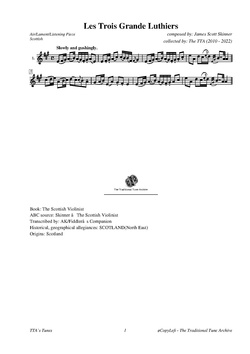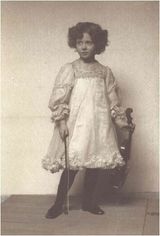Template:Pagina principale/Vetrina Alternativa: Difference between revisions
No edit summary |
No edit summary |
||
| Line 10: | Line 10: | ||
|f_caption=A violin made by Antonio Stradivari in 1684 was known as the Croall. Croall was generous with the instruments, allowing close and repeated inspection to friends and violin-makers, who also played upon them. | |f_caption=A violin made by Antonio Stradivari in 1684 was known as the Croall. Croall was generous with the instruments, allowing close and repeated inspection to friends and violin-makers, who also played upon them. | ||
|f_source=[https://www.youtube.com/watch?v=zBfcLLuTB_I Youtube] | |f_source=[https://www.youtube.com/watch?v=zBfcLLuTB_I Youtube] | ||
|f_pix= | |f_pix=500 | ||
|f_picpix=250 | |f_picpix=250 | ||
|f_article= | |f_article= | ||
Revision as of 15:37, 20 December 2022

Played by: Neil Adam · Judy Turner
Source: Youtube
Image: Katherine McEwan, who owned the Ex-Croall; McEwen Stradivari violin, 1684.

This tune was composed by wikipedia:James_Scott_Skinner (1843-1927) and is contained in his Scottish Violinist (1900) and Harp and Claymore (1904) collections. Skinner's note with his manuscript copy of the music reads: "To the immortal memory of Amati, Stradivarius and Guarnerius. This melody is dedicated to Croall’s famous [String] Quartet [at] 16 Abercromby Place, Edinburgh." Skinner references William Croall, Abercomby Place, Edinburgh, a luthier and collector of fine violins who owned several Stradivaris[1]
A violin made by Antonio Stradivari in 1684 was known as the Croall. Croall was generous with the instruments, allowing close and repeated inspection to friends and violin-makers, who also played upon them.
When the collector died in 1906 the Croall was sold to his friend Fredrick Smith, another collector of great violins. It soon found its way to the violin dealers W.E. Hill & Sons, who quickly found a buyer in Robert Finney McEwen who purchased it in 1908. McEwen was a Scotsman who had the great fortune of coming into an inheritance that allowed him to purse his passion, music, unencumbered by his profession (he had been a lawyer). McEwen also had a daughter who showed considerable talent at a young age, who made her performing debut dueting with her father in 1912. Katherine's concertizing was considerable effected by the First World War, however, and in 1922 she married the Governor of Bombay and Lord Chamberlain, who eventually became the Earl of Scarbrough. Lady Katherine did not play in public again. The instrument she played upon, the Croall, has since been called the Ex-Croall; McEwen Stradivari violin.
...more at: Les Trois Grands Luthiers - full Score(s) and Annotations
X:1 T:Trois Grande Luthiers, Les M:C L:1/8 R:Air Q:"Slowly and gushingly." S:Skinner – The Scottish Violinist Z:AK/Fiddler’s Companion K:A (EF/G/) (A>B) (A/G/).F/.G/ (AE) | E.F/.G/ (Ac) (c/B/)(B/F/) {F}G2 | (EF/G/) (A>B) (A/G/).F/.G/ .A.c | eA d(c/{e}d/) {E/G/}B>>A A2 || (cd/e/) (AB/c/) (dc){c}.B.A | (GA/B/) (EA) .G.F E2 | (EF/G/) (A>B) (A/G/).F/.G/ Ac | eA d(c/{e}d/) {E/G/}B>>A A2 ||
- ↑ Croall owned four Stradivaris: the Lord Newlands of 1702, the Cessole of 1716, the Parke of 1711 and a fourth, then known as The Countess but now known as the Ex-Croall; McEwen. He also owned a Stradiviri viola and and Amati cello.
